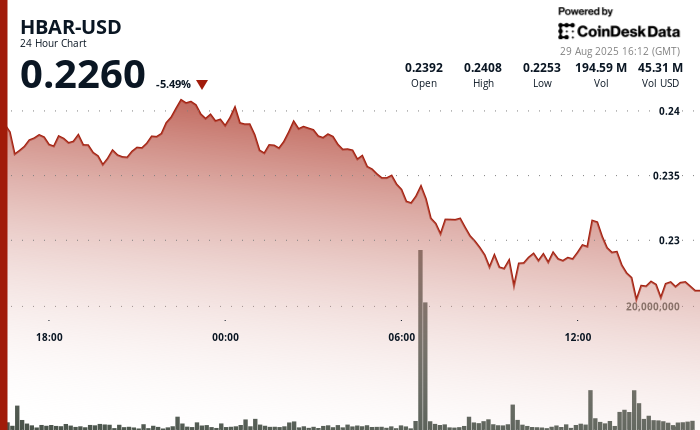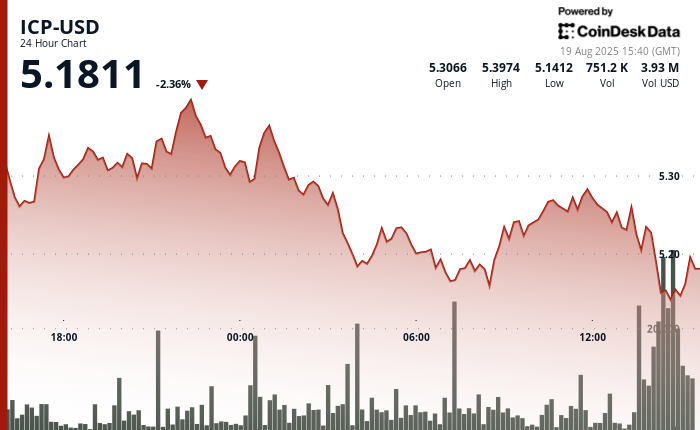Hedera’s HBAR token endured a sharp selloff over the past 24 hours, falling 5% from $0.24 to $0.23 as traders unloaded positions in heavy volumes. The steepest decline came early Wednesday, when more than 277 million tokens changed hands between 06:00 and 09:00 UTC, forcing prices through the $0.235 support level and briefly dragging the token to lows near $0.226. Buyers stepped in at those levels, helping HBAR stabilize, though attempts to retake $0.235–$0.241 met firm resistance.
The pressure intensified again later in the session, with a one-hour drop from $0.229 to $0.226 marked by concentrated selling. Trading activity spiked at 13:30 and again just after 14:00 UTC, pushing the token as low as $0.2245 before a modest rebound. That bounce stalled at $0.227–$0.229, leaving HBAR pinned just above newly established support at $0.225.
The turbulence comes amid a significant regulatory development in the U.S. The Commodity Futures Trading Commission (CFTC) this week issued new guidance allowing U.S. traders access to offshore crypto markets via its Foreign Board of Trade advisory. Analysts suggest the move could open fresh liquidity pipelines for digital assets, including mid-cap tokens like HBAR, at a time when institutional flows are increasingly targeting undervalued corners of decentralized finance.
For now, however, the technical picture remains fragile. HBAR is holding above the $0.226 support area but faces stiff resistance on any rally attempts. With prices sitting near $0.23, traders are watching whether the CFTC’s regulatory shift can outweigh near-term bearish pressure and spark renewed demand for the token.
HBAR/USD (TradingView)
Technical Indicators Reveal Key Levels
- Volume explosions reached 277.89 million during peak selling carnage, confirming impenetrable resistance around $0.235.
- Support fortresses established at $0.226-$0.228 where buying interest provided desperate stabilization.
- Resistance fortifications remain bulletproof at $0.235-$0.241 where previous rallies were systematically destroyed.
- Make-or-break support zone forged at $0.2245-$0.225 following apocalyptic selloff periods.
- Evaporating volume during recovery attempts signals potential consolidation battleground.
Disclaimer: Parts of this article were generated with the assistance from AI tools and reviewed by our editorial team to ensure accuracy and adherence to our standards. For more information, see CoinDesk’s full AI Policy.










